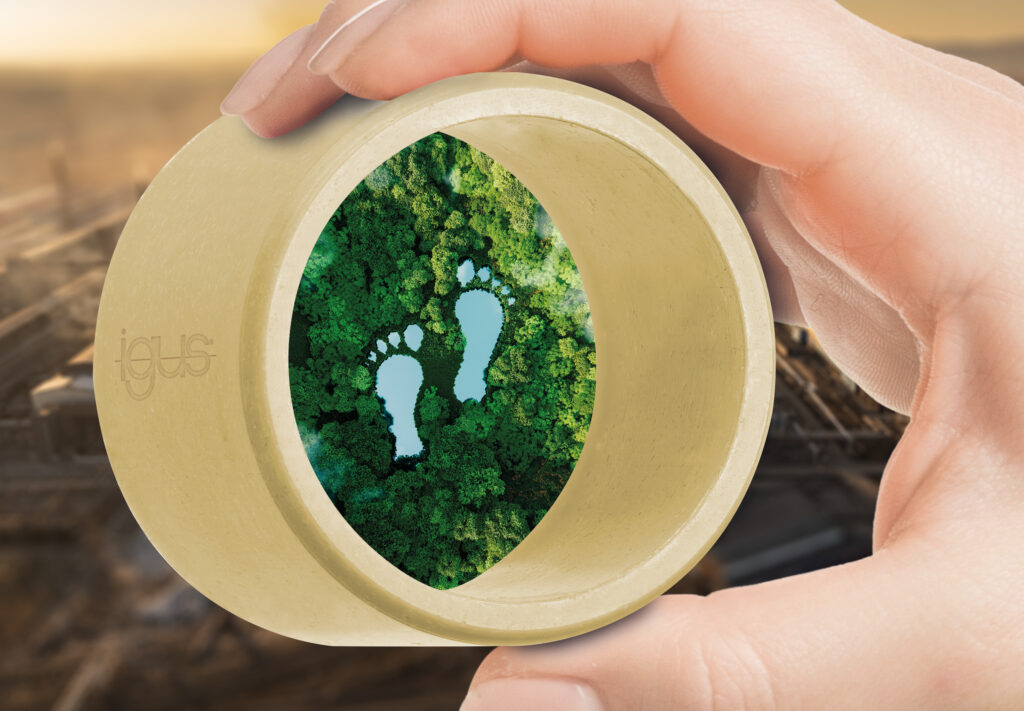Carbon tracking: igus sets the standard to help machine builders report carbon emissions
10/01/2024

As well as increasing the number of low carbon and renewable products and services in 2023, igus uses a reliable carbon tracking method for suppliers and can now provide the carbon content of most iglidur products. It aims to show the carbon content of all its products by mid-2024.
Companies are under growing pressure to report carbon emissions in their ESG and financial reporting. The big challenge is to accurately measure carbon in the supply chain, beyond the company’s control. While reporting Scope 3 emissions – all indirect emissions, not covered by Scope 2, that occur in the value chain of the reporting company – are voluntary now, this may change, and many businesses are electing to report Scope 3 to understand and reduce their true carbon footprint (see footnote*). Scope 3 greenhouse gas (GHG) emissions can account for anywhere between 80%-95% of the total value chain of an organisation’s footprint, according to the New Climate Institute1.
igus calculates the CO2 equivalent, per component, for nearly all catalogue products produced in the 16 standard iglidur materials. And the company aims to show the carbon content for all igus products – over 100,000 individual SKUs – by mid-2024. Most igus products and its proprietary polymers are made from polymer resins sourced from suppliers with which the company has long, strong relationships. They provide the carbon content by volume for the raw material. “To this we calculate and add carbon in transportation and other energy expenditure until the products have reached the igus factory,” says igus UK managing director, Matthew Aldridge. “Our goal is to calculate this as precisely as possible.”
igus in Cologne, Germany is obliged to report the equivalent of Scope 1 and Scope 2 carbon emissions, these being the direct emissions produced from owned or controlled sources, and indirect emissions from purchased energy. The company uses special software to calculate the carbon footprint and all the GHG emissions that take place within the company. This data reveals the areas that need greater focus. “The more data we collect now, the better we can become in the future,” says Aldridge. “For example, we can calculate the carbon footprint in advance when developing new products and can take this into account in our product development.”
The company plans to be carbon neutral with regards to its headquarters, factory, and buildings in 2025, including all direct GHG emissions that arise in connection with the operation of the buildings and the factory. “The whole company aims to be climate-neutral by 2030 at the latest – in fact, the internal ambition is 2028 – in all three scopes of the GHG Protocol,” says Aldridge. “This means direct, indirect and, the most difficult, along the entire value chain. So, it is essential that we have measures in place to count our suppliers’ carbon accurately.”
igus customers are increasingly requesting carbon content information, and the company expects these requests to only increase further.
2023 green product launches are set to rise
To try to achieve net zero emissions, igus is examining plastics in three phases: during their production, in use and at the end of the product’s life. igus’s ECO program has designed new materials for its products that consist of up to 100% regranulated plastic, thus protecting the environment. It made several important product launches and product changes in the last twelve months to expand its sustainable product range, including: a drylin R bearing for use on wooden shafts, to replace metal shafts; a PRT slewing ring bearing with at least 97% regranulate content; plain bearings made from 94% renewable raw materials; a 3D print filament on sustainable cardboard spool, and more2. Customers can expect to see a swathe of green product variants this year.
Note:
*Scope 3 reporting: While reporting Scope 3 emissions is currently voluntary under SECR (2018/1155), it is already best practice for many firms. The government is reviewing SECR to include Scope 3 emissions. Over 4,000 companies in the UK have signed up to the Science Based Targets initiative SBTi (includes Scope 3)3. UK companies are also preparing for the EU Corporate Sustainability Reporting Directive 2022 ( that includes scope 3), where companies with EU150m turnover in the EU and an EU subsidiary or office with EU40m become subject to CSRD from 2028. For more information, see the webinar above.
